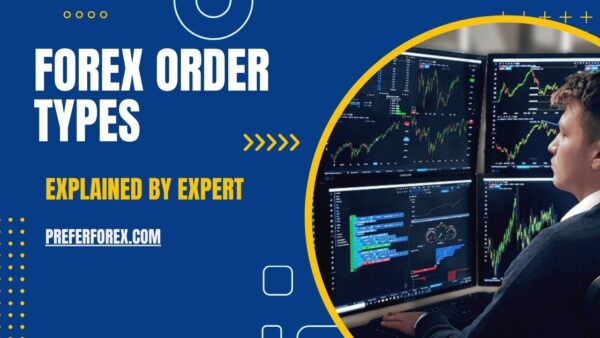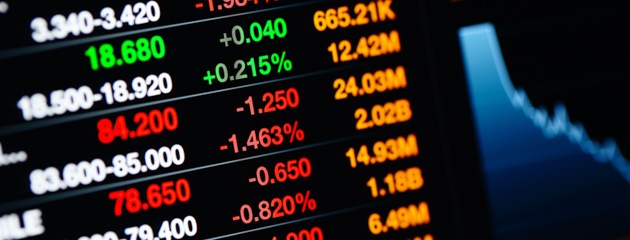Forex Orders Types
The problems and Solution For Trader in the Forex Order Execution Process
The problems and Solution For Trader in the Forex Order Execution Process

For a Forex Trader, this is necessary to learn and know well about all order types of the Forex market. Order execution is a complex thing in this article we present where a trader gets difficulty and how to overcome the situation.
In this article, we shall discuss in-depth order types and how it execute properly to secure your trading account and increase your profit.
Here we shall focus on the trader’s perspective of the order execution process so that the trader can avoid the wrong operation during trading in the terminal.
To trade in the forex market we need to trade in a terminal like Mt4 or cTrader. Any trading terminal has the facilities to create and send orders to the trading server that fills the order. There are several types of trading orders. All orders are a kind of command by the client to place a trading transaction.
This is an order that sends a command to buy or sell a financial instrument at the market / current price. This type of order instantly executes the trading position. A market order is a type of trading order where you instruct your broker to buy or sell a specific quantity of a financial asset (e.g., currency pairs in forex) immediately at the current market price. Market orders are executed as soon as possible at the prevailing market rates. They are typically used when you want to ensure a quick execution and are less concerned about the exact price at which the trade is executed. The key point is that a market order prioritizes speed of execution over price, and you get the asset at the best available price in the market at that moment.
Here’s how a Market Order works in forex trading:
This type of order opens or closes a position at a pre-defined price as soon as the market reaches the price. Hence, this position executed in the future. Pending order is used when trading quotes reach a certain price. Pending order also has a few types like – Buy Limit, Buy Stop, Sell Limit, and Sell Stop. Stop-loss and profit orders are Pending orders after activating stoploss and take-profit orders related to the open position.
There are several types of pending orders in forex trading:
To cut losses and close a trade early, a stop-loss order is used. If the market goes to the opposite of an open position then a stop-loss order is used. For a long position, it met the Bid price on the opposite for a short position it met the ask price.
A stop-loss order is an instruction given by a trader to their broker to automatically sell a currency pair (or close a position) when the market price reaches a specified level, known as the “stop price.”
After opening the trade, we can set the desired level where the trade closes with profit. This type of order closes the position. Like stop-loss orders, this order also met the Bid price for a long position and it met the Ask price in the case of a short position. Here’s how a Take Profit order works:

For a better understanding of placing an order, you can find our trading on YouTube Chanel here. https://www.youtube.com/@preferforex_official
This type of order is instant execution. With the market order, a trader sets the current price to execute the trade, here trader can set a slippage or a price deviation so that if the current moves further certain points then trade should also be executed.
For example, The market is offering GBP / USD The asking price is 1.6842 right now. If we place the buy order your trading platform will instantly execute your order at this given price.
At the time of closing a position manually, the trader is also executing a market order but in the opposite direction of the open position. For example, to close a position bought in GBP / USD, the trader has to sell the same amount he has bought. This is what is also called a clearing or settlement operation.
It is important to note that with almost all brokers, your profits and losses will be calculated in the currency that you use to deposit to your Forex account. For example, if we close a position bought in USD / JPY, it will be buying The Japanese yen again, but your profits or losses will be converted to the currency in which you have opened your account in the broker.
Why does Stop Loss Hit earlier before the price level?
The problem of placing proper stop loss and pending order level and the solution to that problem
Sometimes you may see that your order doesn’t trigger through the quotes to reach the price where you placed the order and sometimes you may see that your stop loss hit earlier though the chart price doesn’t reach the price where you set the stop loss. Here is another article on Proper Stop Loss placing to provide you with more guidelines.
At the time of the execution of take-profit also see that the price is going into the profit zone, but you are not able to grab the profit and this makes you so worried. Below is the cause of this and how to overcome this problem.
When a predefined order level like stop loss, take profit, stop order, and limit orders stay above the current price of the market and is going to hit the level, then it will hit a few pips earlier before the chart price reaches the level. How many pips earlier it will hit will depend on the spread of the pair.
When a predefined order like – stop loss, take profit or pending orders are below the current price of the market and is going to hit the level. When it reaches the level it may not trigger due to spread. The market needs to go 2-3 pips more to trigger the order.
This type of issue can be seen in two types of trading as follows –
In this situation, the SL level is above the current market price and it will hit 2-3 pips earlier, though the chart price will not reach the level and make you out of the trade.
How to Overcome: To overcome the situation you need to add spread to the SL. Or you can simply close the trade manually at the given SL level.
In this case, the order level is below the current price level. Though the chart price reaches the level it may not hit your order because of the spread.
How to Overcome: In this situation, you need to add the spread with the order price level to get triggered at the proper price.
So, a serious forex trader should know how to place proper Orders on his terminal because this will help him avoid false triggers and execute the order at the correct time.
You know that Forex trading can be very beneficial if you have a good Forex trading strategy that can identify proper trading signals. We have tested our own strategy to adapt our own style of trading. That is making a profit consistently. Test our trading strategy with us for FREE
Important Market Updates, Analysis, and Trading Plans Based on the Market Order Flow Method in our YouTube Channel.
| https://www.youtube.com/@preferforex_official | |
| 🔔 Get Instantly Our Latest Forecast and Market Updates. | |
Recommended Topics
Learn The Forex Terms For Success
Learn what are PIPs, TP, SL, Orers All Lingo, and Importance
SL, TP & Trailing Stop
Learn about Stop Loss, Take Profit, and Trailing Stop Implementation
Forex Order Execution Rules
Learn preciously ins and outs of order execution in Mt4 terminal
[custom-facebook-feed feed=1]